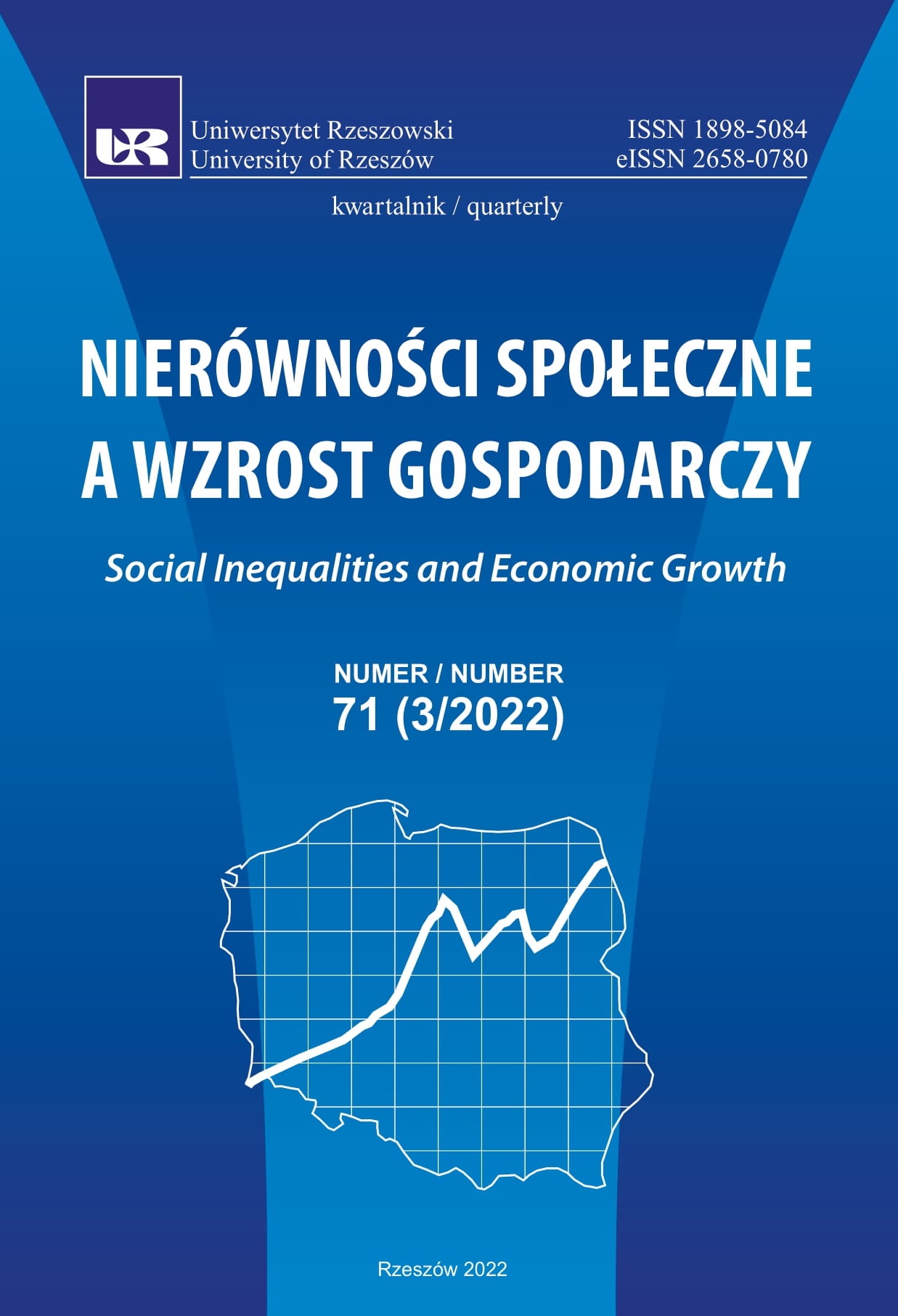The importance of knowledge capital in competitive advantages using examples of selected companies from the biomedical sector
DOI:
https://doi.org/10.15584/nsawg.2022.3.7Keywords:
biomedical sector, knowledge capital, intangible assets, pandemicAbstract
The purpose of the article is to explain the impact of knowledge capital on the competitive advantages of companies from the biomedical sector. The primary research period is 2016–2021. The study selected four biomedical enterprises that, during the pandemic, were involved in the production and distribution of vaccines against the COVID-19 virus and, at that time, showed the highest level of effectiveness. The surveyed companies include Pfizer, BioNTech, Moderna and Sinovac. In the course of the research, a hypothesis was the strong competitive positions of the selected companies resulted from the effective transfer of knowledge capital into intangible assets, and the science research and development expenses incurred for many years turned out
to be profitable investments. In order to verify the hypothesis, the methods of financial analysis of enterprises were used, including vertical and horizontal balance sheet analyses, cost structure assessment and efficiency assessment. The pandemic period had a mobilising effect on companies that previously conducted advanced research on the use of mRNA technology in the fight against infectious diseases. The capital of knowledge in intangible fixed assets turned out to be the primary factor enhancing the competitive advantages of these companies on a global market. The successes of the surveyed economic units occurred during the global crisis related to the pandemic. During this time, many entities from the service sector, operating in direct contact with clients, were losing the foundations for further operations, turnover and profits dropped sharply, and the overall level of debt was rapidly increasing. The economic space has polarised significantly, and inequalities between enterprises and sections of each sector have increased.
Downloads
References
Becker, G.S. (1993). Human Capital: A Theoretical and Empirical Analysis with Special Reference to Education. Chicago: University of Chicago Press. DOI: 10.7208/chicago/9780226041223.001.0001.
Brendel, A. (2006). Interne Arbeitsmärkte. Erlangen-Nürnberg: Friedrich-Alexander-Universität.
Dickens, W.T., Lang, K. (1992). Labor Market Segmentation Theory: Reconsidering The Evidence Working Paper, 4087, 14–57. Cambridge: National Bureau of Economic Research. Pobrano z: https://www.nber.org/system/files/working_papers/w4087/w4087.pdf (2022.03.24).
Edvinsson, L., Hofman-Bang, P., Jacobsen, K. (2005). Intellectual capital in waiting – a strategic IC challenge. Handbook of Business Strategy, 1, tom 6, 133–140. DOI:10.1108/08944310510557143.
Geise, M. (2018). Wpływ kapitału strukturalnego na zdolność powstawania miejsc pracy w korporacjach sektora nowych technologii. Marketing i Zarządzanie, 1, 73–82. DOI: 10.18276/miz.2018.51-07.
Geise, M. (2020). Sources of Competitive Advantages during the Industry 4.0 Revolution. Introduction to the Research on the Example of Selected Companies in the Healthcare Sector. International Journal of Business and Management Invention, 9(11), 49–59. DOI: 10.35629/8028-0911014959.
Geise, M. (2022). Przemiany w popycie na pracę. Ujęcia przekrojowe. Bydgoszcz: Wydawnictwo Uniwersytetu Kazimierza Wielkiego.
http://www.sinovac.com/investor/show.php?id=177&lang=en (2022.02.26).
https://pulsmedycyny.pl/bextra-wycofana-z-obrotu-w-unii-879169 (2022.03.08).
https://stooq.pl (2022.03.01).
https://www.forbes.com/lists/global2000/?sh=570c683d5ac0 (2022.07.29).
https://www.globenewswire.com/en/search/organization/BioNTech%2520SE (2022.03.05).
https://www.modernatx.com/sites/default/files/mRNA-1273-P301-Protocol.pdf (2022.03.06).
https://www.morningstar.com (2022.03.08).
https://www.nih.gov/news-events/news-releases/statement-nih-barda-fda-emergency-use-authorization-moderna-covid-19-vaccine, (2022.03.03).
https://www.pfizer.com/about/history (2022.03.03).
Kryńska, E. (1996). Segmentacja rynku pracy. Podstawy teoretyczne i analiza statystyczna. Łódź: Wydawnictwo Uniwersytetu Łódzkiego.
Roos, J., Roos, G., Dragonetti, N.C., Edvinsson, L. (1997). Intellectual capital. Navigating the New Business Landscape. Hampshire-London: Macmillan Press.
Schulz, T.W. (1981). Investing in People. The Economics of Population Quality. Berkeley: University of California. DOI: 10.1525/9780520318540.
Sullivan, P.H. (1999). Profiting from intellectual capital. Journal of Knowledge Management, 3(2), 132–143. DOI: 10.1108/13673279910275585.
Sveiby, K-E. (1996). Measuring Intangibles: Suggested Indicators with cases from professional service organisations and high tech firms. Pobrano z: https://www.sveiby.com/article/Measuring-Intangibles-Suggested-Indicators-with-Cases (2022.03.20).
Thurow, L.C. (1999). Przyszłość kapitalizmu. Jak dzisiejsze siły ekonomiczne kształtują świat jutra Wrocław: Wydawnictwo Dolnośląskie.
Downloads
Published
How to Cite
Issue
Section
License
Copyright (c) 2022 University of Rzeszow

This work is licensed under a Creative Commons Attribution-ShareAlike 4.0 International License.


